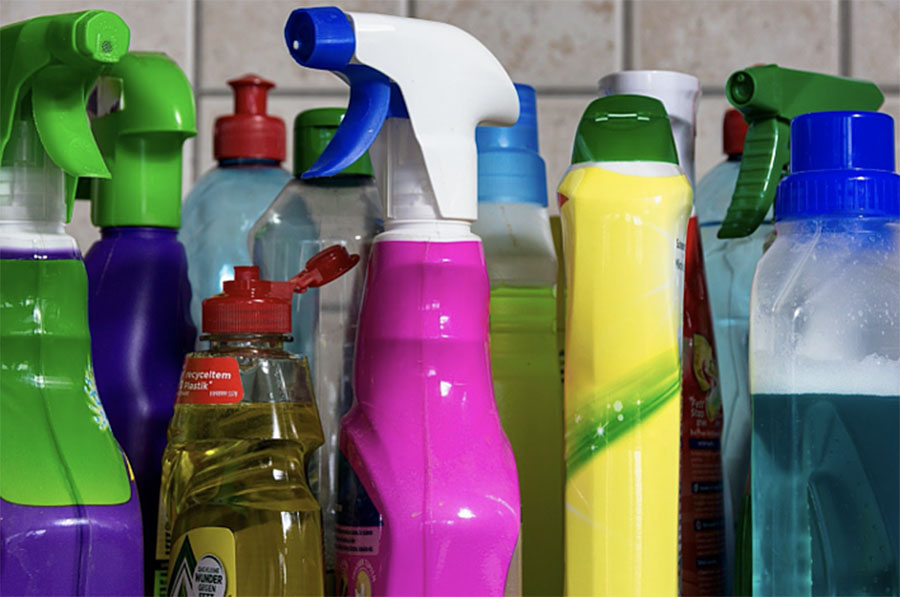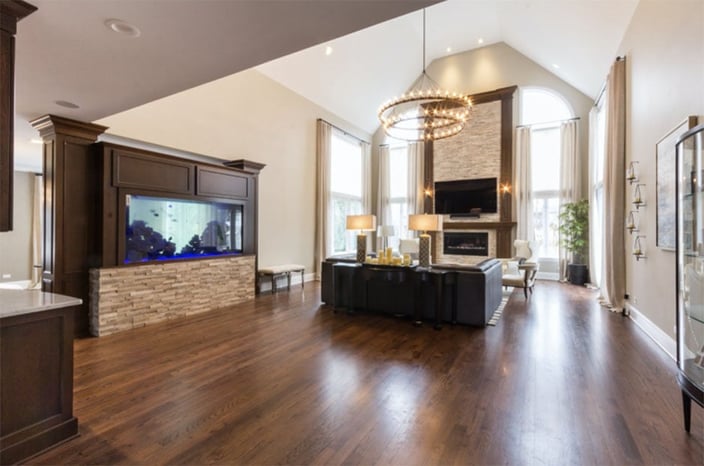Make Cleaning Easier: Choose Building Materials that Minimize the Work
March 31, 2020 •Brian Hogan

In adult life, cleaning your living spaces is something that is just a given and is a chore that evokes many emotions from individuals. Some people love the act of scrubbing down a room and the feeling of accomplishment or satisfaction that follows a job well done. Others dread or feel overwhelmed just thinking about having to tackle the task.
No matter what sentiment house cleaning produces from within, the fact that our lives are busier than ever often makes it hard to devote time and energy to these tasks. With the demands of a “more-with-less” work climate and active/loaded home schedules, we need a less-is-more approach to cleaning our homes and simplifying our lives.
At Hogan Design & Construction (HDC), we truly believe one avenue to achieve this goal is through well-thought-out home design. In addition to making sure you have the right flow and organizational solutions in your space, we know that the materials you choose can greatly help reduce the time and energy it takes to maintain a clean and healthy living environment.
To help you make educated choices during your next home project, we have compiled our list of materials that require less maintenance and help you keep your home clean. Wouldn’t it be nice to have that time back to spend more time doing the things you love?
Choose Quartz for Kitchen Baths
Engineered Quartz stone, is a man-made nonporous surface and has many positives going for it. For example ...
- It comes in many colors and patterns so it works for many styles and tastes.
- It is extremely durable making it difficult to scratch or chip.
- It requires no routine sealing, so it is maintenance-free.
- It does not stain.
- It is resistant to the buildup of mold, mildew, and bacteria often found in kitchen and bath spaces. Silestone, a specific type of manufactured quartz, has antimicrobial properties so it actually fights against infectious microorganisms.
- It is a low-emission product, protecting your indoor air quality vs. other natural stones.
Quartz remains our top choice because of its protective qualities and easy to clean properties. Most commonly used for countertops in kitchens and baths, it can also be used as a backsplash, for shower seats, ledges and curbs, as well as tub surrounds. Some people even use it in shower stall surrounds. The large slabs eliminate grout lines that can get dirty and require a lot of energy to clean.
The downside: this product can be expensive relative to some alternative options.
Choose Cultured Marble for Baths. Similar to Quartz, this man-made stone is durable and low maintenance relative to natural stone options. While it can be offered in many colors, it generally mimics the patterning of its natural counterpart, marble, for a classic look.
The large slabs eliminate grout lines and maintain a beautiful shiny finish without much effort. Engineered to be less porous than natural stone, it is resistant to the buildup of mold, mildew and other bacteria like Quartz. It also has a reduced price tag.
At HDC, we often recommend this product to be used in shower stall surrounds. With its mold and mildew resistant surface and no grout lines, it requires no intense scrubbing.
The downside: cultured marble will stain, especially when exposed to spills with acidic qualities. So, we generally advise to not use this surface in areas like kitchens where spills often occur or bathrooms in which nail polish and make-up products are used.
Choose Porcelain Tile for High-Traffic and Wet Floors. Of all tile, porcelain is the most durable, resistant to scratches and chipping. It is often used in high foot-traffic spaces and areas exposed to water (such as entryways, bathrooms, kitchens, laundry rooms and mudrooms) because it is stain resistant and relatively low maintenance.
Water can be wiped up and the floor is swept, “swiffered” or vacuumed weekly. Monthly it should be disinfected with a tile cleaner or a vinegar and water-based product.
The downside: tile requires grout which will need to be maintained and resealed. It is recommended that it be done at least once a year. And, if you do not install radiant floor heating, tile can also be a bit chilly on your bare feet.

Choose Finished Solid Wood for Living Spaces
Aesthetically pleasing, solid wood floors add warmth and natural beauty to spaces as well as add value to your home. They are also relatively low maintenance. Once installed and properly finished, wood floors only require to be swept or "swiffered" weekly. Similar to tile, they should be disinfected with a wood floor cleaner and dry mop monthly too.
The downside: even properly finished, we recommend wiping up spills immediately and then using a wood surface cleaner to wipe up any residual mess. Wood floors are also susceptible to dents and scratches so overtime will need to be refinished, especially for those of you with pets and children.
Choose Luxury Vinyl for Basement Flooring
Vinyl Flooring has come a long way since its start in the 1950s. The new colors and patterns can take on the look of tile, stone, and wood. Waterproof and stain-resistant, this material is perfect for the subterranean level of a home which is prone to moisture. It can be dry mopped or swept weekly and disinfected once a month with a floor cleaner.
The downside: can rip or tear under pointy heels or sharp pet claws/nails.
Ultimately any hard surface flooring is a great clean and healthy alternative to carpet which often harbors dust, allergens, and mites. And, by selecting the right materials in all your spaces, you can truly have a cleaner and healthier home environment with less work.
For more home-related tips from the team at HDC, subscribe to our monthly e-newsletter, catch up on our weekly blog, or follow us on Facebook or Instagram.

